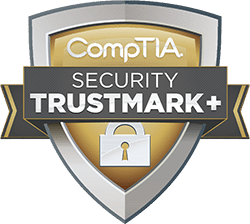Prioritizing Cybersecurity in Your IT Budget
Cybersecurity is a serious concern for every tech-reliant organization regardless of size, niche, or industry. Although the worst of the pandemic is now behind us, many companies are still struggling to align their digital security posture with the emerging post-pandemic challenges such as hybrid work, the new breed of cyber threats, and IT talent scarcity.
The 2022 State of CIO report shows that cybersecurity remains a top priority in the business world, with 51% of CIOs saying they are focusing on security management.
Addressing cybersecurity means allocating resources toward various security measures and efforts. That’s what this article is about – prioritizing digital safety through a dedicated cybersecurity budget.
Budgeting for cybersecurity
The budgeting season for the next fiscal year has begun. It’s time to incorporate cybersecurity into your IT budget for the coming year. Safety should be a top item in your organization’s IT plan, not an afterthought.
The question is, how much should you spend on cybersecurity? According to a Deloitte Insights report, businesses invest about 6%–14% of their annual IT budget in cybersecurity.
Obviously, this varies depending on the business. But one thing’s for sure: cybersecurity spending is on the rise. Gartner forecasts global security and risk management spending to grow 11.3% in 2023.
Instead of focusing on the figures, let’s discuss how you should allocate your cybersecurity budget.
4 critical areas your cybersecurity budget should cover
The staff
Your employees are the first line of defense against cyberattacks. But they’re also the weakest link in your cybersecurity framework. Worryingly, 95% of cybersecurity issues can be attributed to human error.
However, regular cybersecurity training can quickly turn your employees from a security liability to a valuable security asset. To do so, invest in training programs that promote cybersecurity awareness, cyber hygiene, and accountability.
IT infrastructure
Reinforce security throughout your IT infrastructure, from hardware and software to network systems. There are many different ways you can secure your IT infrastructure, depending on its composition and complexity.
Here are some effective IT security measures worth considering:
- Analyze and understand the security protocols and challenges of each new IT implementation.
- Install premium security tools such as firewalls, anti-viruses, and intruder detection systems.
- Invest in network monitoring systems capable of detecting early signs of cyberattacks.
- Audit your IT security regularly through pen tests and vulnerability assessments.
- Keep all your IT systems up to date by periodically upgrading the hardware and updating/patching software applications.
Emails
Email is a common vector for phishing and malware attacks. According to Verizon’s 2022 DBIR, 75% of malware is delivered mainly through email. Additionally, most phishers use email to target their victims. Compromised business email accounts are also popular in elaborate and highly-targeted social engineering scams.
Email security is a crucial facet of cybersecurity. Encourage your employees to observe email security best practices, such as refraining from clicking on suspicious/unknown email links and attachments, creating strong passwords, and using business email addresses strictly for business communications. You can also install spam and Geo filters on email clients to keep scammers away.
User accounts
Direct a portion of your IT budget to secure user accounts. Threat actors can exploit compromised user accounts, especially those with administrative privileges, to launch all sorts of attacks, from phishing and pretexting to malware injections.
Securing user accounts primarily involves strengthening user verification systems and minimizing the level of trust in users and endpoints.
Here are a few ways to do just that:
• Enforce zero-trust policies
• Activate multi-factor authentication (MFA) on all user accounts
• Award minimum privileges to each account based on the user’s role
• Monitor your staff and endpoints closely with designated tools
Investing in cybersecurity can seem costly, but it’s nothing compared to the cost of a breach, which currently stands at an average of $9.44 million.
Besides, hiring an MSP like CTSI can handle all your cybersecurity needs while keeping you within budget. You don’t have to spend a fortune to secure your digital assets; partner with CTSI today and start streamlining your cybersecurity.
















